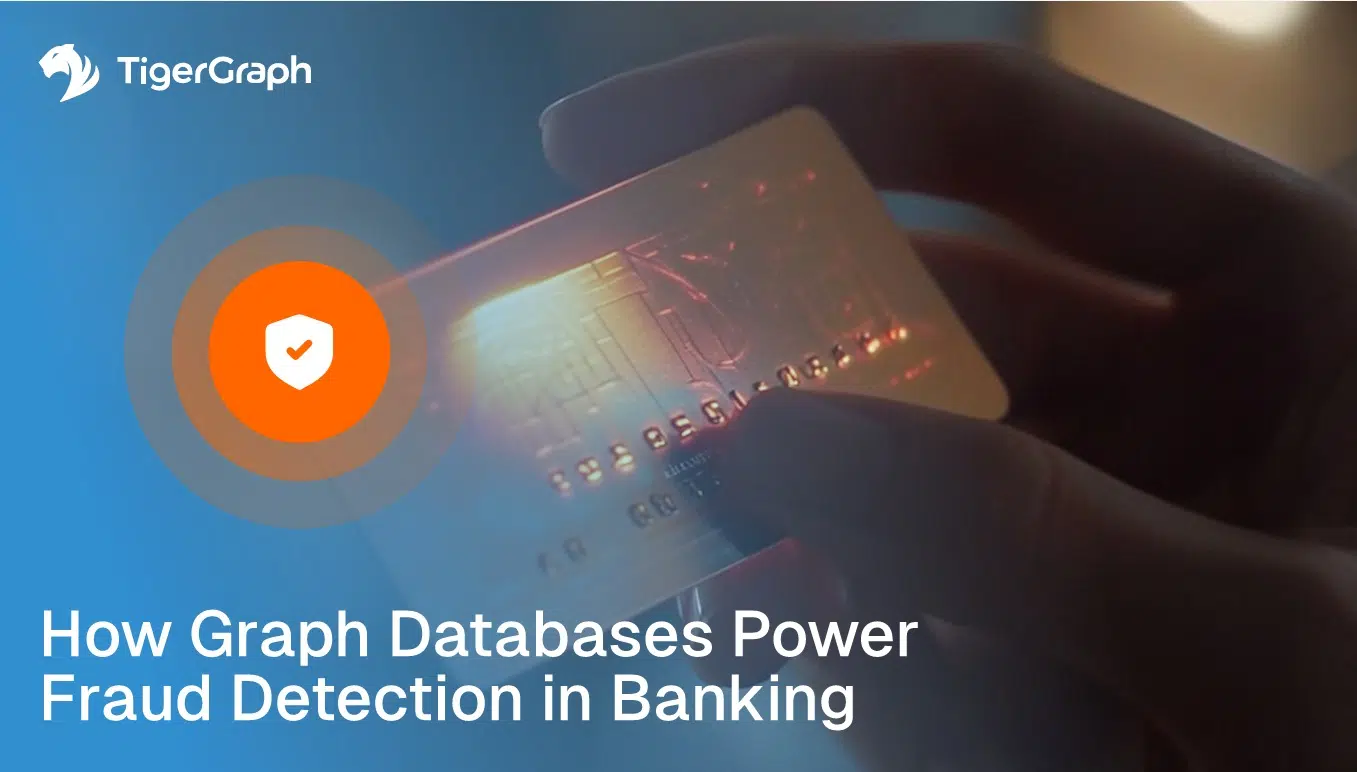How Graph Databases Power Fraud Detection in Banking
Bank fraud today is neither obvious nor simplistic. It doesn’t announce itself; rather, it hides in plain sight. It’s buried in the fine print of millions of legitimate transactions, weaving through accounts, devices, and merchants at a speed legacy systems can’t match.
The scams are bigger, smarter, and more connected than ever, with funds hopping across jurisdictions in seconds and vanishing before the first alert is raised.
At a top-tier bank, a single fraud ring might span hundreds of mule accounts, dozens of merchant relationships, and a web of synthetic identities stitched together from stolen data. Traditional tools chase suspicious transactions one at a time, missing the multi-hop connections, coordinated timing, and hidden facilitators that turn small scams into multimillion-dollar losses. And when they do raise a flag, they often drown investigators in false positives, wasting time while real threats slip through.
Graph technology changes that. By mapping and analyzing every relationship in real time, across billions of data points, banks can see the entire network behind the fraud, not just the symptoms. It’s the difference between reacting after the loss and stopping it cold.
The Graph Advantage in Fraud Detection
In a graph database, each account, device, merchant, or transaction is a node, and the connections between them are edges. That structure allows banks to see the bigger picture and the hidden risks, in ways traditional systems can’t.
Graph analytics can surface patterns that flat data models simply can’t touch:
- Circular money flows designed to launder funds undetected – By tracing transactions over multiple hops and time intervals, graph algorithms can identify when money leaves an account only to return through a different route, often via a chain of intermediaries. These loops are a hallmark of laundering schemes like layering and integration, which rule-based systems often miss without direct links.
- Merchant clusters that consistently appear in high-risk transactions – Community detection can reveal when multiple merchants are indirectly connected through shared customers, devices, or payment processors. This clustering often signals collusion, such as shell merchants inflating transactions to launder funds or process stolen card payments.
- Synthetic identity networks linked through shared attributes – Fraudsters often create fake identities by combining real and fabricated data — for example, using a valid Social Security number with a different name and address. Graph-based entity resolution can link these accounts by identifying shared IP addresses, devices, contact information, or behavioral patterns, exposing networks that would otherwise appear unrelated.
- Shortest paths from a “legit” account to a known fraud node – Even accounts that appear clean can be just a few degrees of separation from high-risk entities. Graph traversal can calculate the minimum number of hops between nodes, revealing hidden proximity to mule accounts, sanctioned entities, or confirmed fraudsters — often before a direct transaction takes place.
And because TigerGraph uses index-free adjacency and parallel traversal, it can detect these patterns across billions of transactions per day in 10s of milliseconds – fast enough to block fraud attempts without slowing down legitimate transactions.
Real-World Results: Tier-1 Banks in Action
When fraud detection is treated as a connected-data problem, the difference is immediate and measurable. Investigators gain context in seconds instead of hours. High-risk transactions are intercepted before they settle. And detection models become sharper with every query.
In the Consumer Banking division of a Fortune 100 bank, fraud prevention was already running on machine learning, but it wasn’t catching enough. By integrating TigerGraph into its fraud pipeline, the bank began feeding graph-based features into its existing ML models.
Those features revealed connections and risk patterns that transaction-level analysis simply couldn’t see, driving a significant jump in fraud prediction accuracy. The result was faster intervention, fewer false negatives, and millions in losses prevented before they could touch customer accounts.
Another global bank faced a persistent problem: coordinated fraud rings that evaded traditional detection rules. By deploying TigerGraph’s advanced algorithms across consumer accounts, credit cards, and online transactions, analysts could trace relationship patterns at scale, surfacing networks of linked merchants, mule accounts, and synthetic identities.
Investigators could dismantle entire fraud rings in days, not months, while reducing false positives that had previously clogged the queue.
These are not bolt-on tools or isolated wins. They are examples of what happens when fraud detection shifts from chasing single events to mapping and dismantling entire networks.
Why Fraud Teams at Top Banks Choose Graph
With TigerGraph, fraud teams detect anomalies, and they understand the story behind them. That means:
- Exposing fraud rings before they fully form using algorithms like Louvain to detect tightly knit communities, PageRank to pinpoint high-influence accounts, and proximity search to flag suspicious closeness to known bad actors.
• Tracking fraud as it evolves, not just after the fact, with temporal graphs that reveal when sleeper accounts suddenly activate or when laundering patterns stretch over months.
• Cutting investigation time in half with visual graph views that show investigators why an alert fired, not just that it did.
• Feeding models intelligence they’ve never had before by supplying AI/ML pipelines with rich, connected-data features that boost recall, slash false positives, and make risk scoring explainable to compliance teams.
Unlike batch-based detection systems, TigerGraph delivers these capabilities at the point of transaction, where milliseconds decide whether fraud is stopped or settled.
What This Means for Fraud Leaders
For senior fraud executives, the shift to graph is both a strategic and operational upgrade.
- SVP of Fraud: Gain real-time visibility into evolving fraud networks, cutting both losses and compliance risk.
- Director of Fraud Network Strategies: Build scalable, hybrid detection pipelines that blend graph analytics with AI/ML for multi-layer scoring.
- Fraud Operations Managers: Slash investigation time with context-rich alerts that point directly to the “why” behind a flagged transaction.
- AI/ML Leads: Generate highly accurate, explainable features from connected entity and transaction data, and feed them into existing models without rebuilding from scratch.
Fraud networks are getting faster, more complex, and more adaptive — but they’re still no match for graph. The world’s top banks, including JP Morgan and Nubank, have shown that when detection shifts from chasing isolated events to mapping the entire network, prevention becomes faster, smarter, and far more scalable than anything possible with flat data models.
With TigerGraph, every transaction, device, and account becomes part of a living network you can analyze in milliseconds. That means stopping coordinated fraud before it settles, protecting customers, and safeguarding revenue, all in real time.
TigerGraph doesn’t just connect the dots. It gives you the full picture before the damage is done. If your fraud prevention strategy still thinks in straight lines, it’s time to see how connected data can rewrite the odds in your favor. Reach out and let’s talk about how your team can dismantle entire networks before they strike.
And start building your fraud detection with TigerGraph’s fully managed cloud. Try it free at tgcloud.io.

